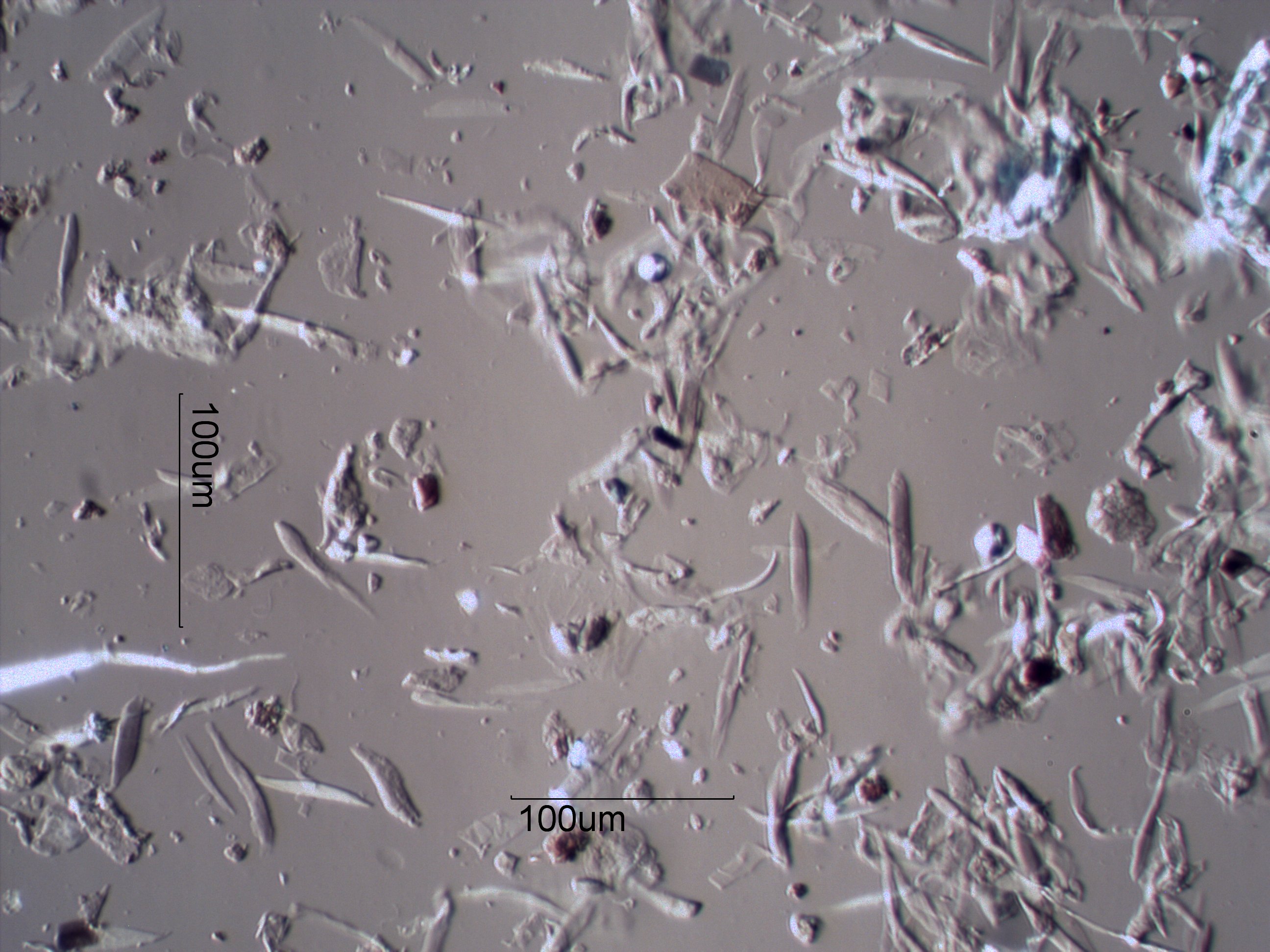Dog Dander
This is from an environmental tapelift collected in a home
with two humans, five dogs, and two birds.
The length of the skin flakes is unique to dogs. The cresent shaped dander is unique
to birds. The polyhedral flakes are human dander.
Transmitted Phase Contrast Illumination
Definition/Function:
Significance in the Environment:
Dog dander is common in homes with a pet dog but is also common in office and school
environments from the clothing of dog owners.
It is more common than cat dander in office and school environments because dogs tend to
generate more dander than cats. Fewer
people are sensitive to dogs than to cats so the presence of dog dander is generally not
a source of health complaints in these
environments. Bird dander is common in homes with pet birds but is also found as a
common outdoor particle that enters homes.
Characteristic Features:
Dog skin flakes tend to be about three times or more as long as they are wide. In indoor
tapelift samples they can be confussed with
very fine wood sawdust particles but the wood sawdust particles almost always contain
cell structure or distictive fibril structure at
the edges that distinguish the sawdust from the dog dander. Sawdust has a much higher
birefringence than dog dander and so can easily
be distinguished when viewed with crossed polarized light.
Bird dander tends to have low order birefingence. It forms thin cresent shaped particles
and is unique to birds.
Associated Particles:
Dog hair may be found with the sample.
References:


